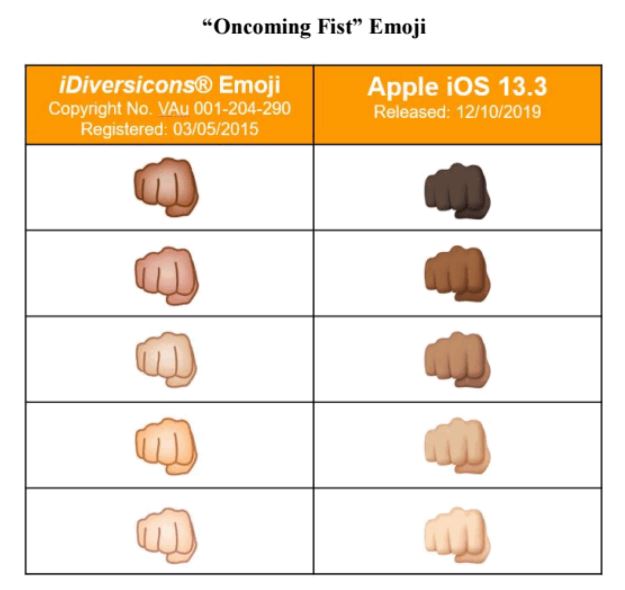Trib. Bologna n. 310/2021 del 11.01.2021, Rg 10415/2016, Benatti c. Tecnotelai srl+1, decide un caso relativo all’oggetto.
Caso frequente: l’estinzione di un iniziale rapporto con l’artista non trattiene l’impresa dal continuare ad usare le sue opere.
I passaggi su creatività e contraffazione:
1) Sulla creatività: <<Le ampie produzioni documentali, e la relazione del Ctu arch.Castagnetti confermano quanto è già stato
apprezzato in sede cautelare, ovvero in primo luogo le qualità artistiche della attrice, che, seppure
sensibile ai movimenti artistici ed in particolare influenzata dalle correnti dell’arte astratta
contemporanea, utilizza un linguaggio espressivo ben delineato, frutto dell’opera svolta e affinata nel
corso degli anni.
Il carattere originale, e personale si esprime tra l’altro con l’utilizzo di tecniche miste ereditate da varie
discipline, e la scelta preferenziale del vetro, come supporto; si manifesta nella complessità
compositiva e nella estemporaneità gestuale, caratteristiche riscontrabili nell’opera della artista e quindi
stilemi propri di Vanda Benatti.
Di queste qualità artistiche vi sono riconoscimenti esterni, come risulta dai doc.ti da 1 a 6 di parte
attrice, atteso che Vanda Benatti oltre ad avere venduto le proprie opere a clienti privati ed istituzioni,
ha esposto in diverse mostre, a Bologna, in altri luoghi di Italia e all’estero: documentazione
fotografica delle sue vetrate si trova, in particolare, presso il Centre International du Vitrail a Romont
(Svizzera); è anche documentato l’evento denominato “Oro”, tenutosi a Bologna nell’ottobre 2000
presso la Galleria “Ennevu”, mostra personale ed esclusiva dell’artista, pubblicizzata all’epoca sul
quotidiano La Repubblica (cfr. la locandina “Oro” Anno 2000 – doc. 5, e l’estratto archivio on line del
quotidiano “La Repubblica” – doc. 6); nel sito della attrice si rinvengono poi recensioni e segni di
apprezzamento provenienti da plurime personalità del mondo artistico e culturale, e il riconoscimento
delle sue qualità espressive, e della sua unicità sta alla base del rapporto di collaborazione (termine che
si usa qui in senso lato, e senza dedurne dirette conseguenze, quanto alla controversa cessione dei diritti
d’autore) protrattosi tra Silvia Mazzolini, e la Tecnotelai srl, (che alla famiglia Mazzolini fa capo), da
una parte, e l’artista dall’altra.
Dunque sussistono nelle opera in tesi contraffatte e plagiate i caratteri della originalità creativa
riconoscibile, cui fa riferimento l’art. 1 L. 633 del 1941, creatività intesa come personale e individuale
espressione di un’oggettività appartenente alle categorie elencate, in via esemplificativa, nell’art. 1
legge citata, secondo i canoni interpretativi giurisprudenziali (vedi Cass, n.25173 del 2011; n. 5089 del
2004>>.
2) Sulla mancanza di scarto semantico tra le riproduzioni censburate e le opere azionate:
<<Per indagare con maggiori strumenti il delicato tema della contraffazione o plagio, è stata svolta una
Ctu, e il consulente dell’uffico ha in primo luogo – sotto il profilo operativo- ottenuto dalla attrice, nel
costante confronto diretto con le parti, un riepilogo delle potenziali violazioni, da utilizzare come
traccia univoca e base di lavoro, accettata da tutti, per eseguire i vari raffronti tra le opere di parte
attrice ed i prodotti di parte convenuta, giungendo così all’apprezzabile risultato di limitare,
concordemente, le operazioni di analisi a circa 50 casi in contestazione (pag.3 della relazione). Così opportunamente chiarito l’ampiezza del campo di indagine, il Ctu svolge alcune considerazioni di
carattere generale, e metodologico, rilevando che il confronto richiesto corre tra opere d’arte (di Vanda
Benatti) e prodotti di design, (di Tecnotelai) e sostenendo che tale diversa natura non comporta
concrete conseguenze, in ordine al criterio di accertamento della contraffazione. Aggiunge che pure il
fatto che la comparazione spesso corra tra elementi di natura diversa, realizzati con tecniche e materiali
diversi, talora bidimensionali, talora tridimensionali, e talora mere elaborazioni digitali, non esclude la
possibilità di confronto, posto che in ogni caso lo sforzo di comprensione passa dalla individuazione
della creatività ed originalità dell’opera.
Si tratta di affermazioni non oggetto di contestazione in causa, cosicchè possono ritenersi un dato
pacifico; si tratta inoltre di giudizi pienamente condivisibili, anche per quanto dianzi detto, circa il
valore essenziale della forma espressiva, come oggetto di indagine: il punto di contatto tra tutti i mezzi
semantici utilizzati è infatti indubbiamente, (come afferma anche l’artista, nelle sue osservazioni alla
Ctu), il disegno esecutivo, che costituisce il primo passaggio creativo che traduce l’idea in espressione
esterna, per poi giungere, con la scelta dei diversi supporti, tecniche ed i materiali, alla forma finale
impressa dall’artista.
Quindi il Ctu, nella relazione depositata, rende possibile in concreto il raffronto tra le opere della
artista, di cui è dedotta la contraffazione, (realizzate o in forma progettuale) con i correlati elementi di
arredo di Tecnotelai, formando delle schede di comparazione, che il Collegio può esaminare, per
compiere direttamente, quale peritus peritorum l’analisi delle opere, ricercando l’idea alla base
dell’opera e valutando la sua originalità, poi individuando la forma, analizzando la struttura della
composizione, i dettagli caratterizzanti delle opere, e le eventuali operazioni di manipolazione delle
immagini digitali svolte, per esprimere infine il giudizio conclusivo, che pur in presenza di una ripresa
di elementi secondo i passaggi esposti, può escludere la contraffazione, laddove verifichi l’esistenza di
un apporto creativo capace di trasformare gli elementi in una opera originale.
Ciò premesso, e in esito alla analisi così descritta, condotta su un numero di opere individuate
concordemente, che ricomprendono quelle oggetto del provvedimento cautelare, pare molto evidente
che oltre ad avere tratto complessivamente una larga ispirazione dall’opera artistica di Vanda Benatti,
la Tecnotelai ne ha contraffatto in più occasioni le forme>>
